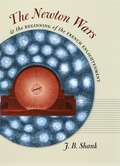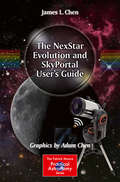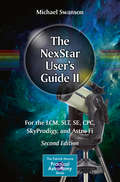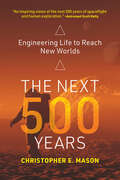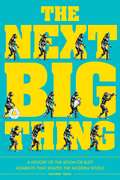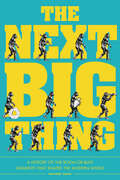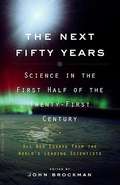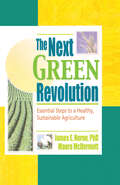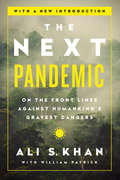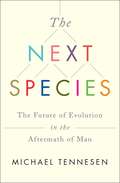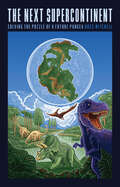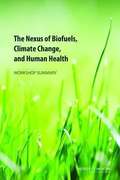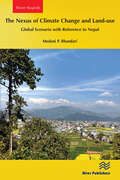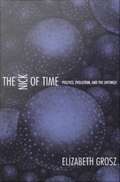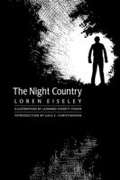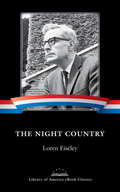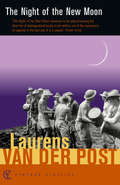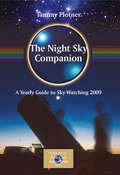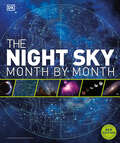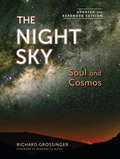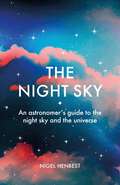- Table View
- List View
The Newton Wars and the Beginning of the French Enlightenment
by J. B. ShankNothing is considered more natural than the connection between Isaac Newton's science and the modernity that came into being during the eighteenth-century Enlightenment. Terms like "Newtonianism" are routinely taken as synonyms for "Enlightenment" and "modern" thought, yet the particular conjunction of these terms has a history full of accidents and contingencies. Modern physics, for example, was not the determined result of the rational unfolding of Newton's scientific work in the eighteenth century, nor was the Enlightenment the natural and inevitable consequence of Newton's eighteenth-century reception. Each of these outcomes, in fact, was a contingent event produced by the particular historical developments of the early eighteenth century. A comprehensive study of public culture,The Newton Wars and the Beginning of the French Enlightenmentdigsbelow the surface of the commonplace narratives that link Newton with Enlightenment thought to examine the actual historical changes that brought them together in eighteenth-century time and space. Drawing on the full range of early modern scientific sources, from studied scientific treatises and academic papers to book reviews, commentaries, and private correspondence, J. B. Shank challenges the widely accepted claim that Isaac Newton's solitary genius is the reason for his iconic status as the father of modern physics and the philosophemovement.
The NexStar Evolution and SkyPortal User's Guide
by James L. Chen Adam ChenThis book serves as a comprehensive guide for using a Nexstar Evolution mount with WiFi SkyPortal control, walking the reader through the process for aligning and operating the system from a tablet or smartphone. The next generation Go-To mount from Celestron, this is compatible not only with the Nextstar Evolution but also with older mounts. It is the ideal resource for anyone who owns, or is thinking of owning, a Nexstar Evolution telescope, or adapting their existing Celestron mount. Pros and cons of the system are thoroughly covered with a critical depth that addresses any possible question by users. Beginning with a brief history of Go-To telescopes and the genesis of this still new technology, the author covers every aspect of the newly expanding capability in observing. This includes the associated Sky Portal smartphone and tablet application, the transition from the original Nexstar GoTo system to the new SkyPortal system, the use of the Sky Portal application with its Sky Safari 4 basic software and Celestron WiFi adaptations, and discussions on the use of SkyPortal application using the Celestron adapter on older Celestron mounts. Comments and recommendations for equipment enable the reader to successfully use and appreciate the new WiFi capability without becoming overwhelmed. Extensively illustrated using actual screenshots from the program interface, this is the only guide to the Nextstar SkyPortal an observer will need.
The NexStar User’s Guide II
by Michael SwansonMichael Swanson's online discussions with literally thousands of NexStar owners made it clear that there was a desperate need for a book such as this - one that provides a complete, detailed guide to buying, using and maintaining NexStar telescopes. Although this book is highly comprehensive, it is suitable for beginners - there is a chapter on "Astronomy Basics" - and experts alike. Celestron's NexStar telescopes were introduced in 1999, beginning with their first computer controlled "go to" model, a 5-inch. More models appeared in quick succession, and Celestron's new range made it one of the two dominant manufacturers of affordable "go to" telescopes.
The Next 500 Years: Engineering Life to Reach New Worlds
by Christopher E. MasonAn argument that we have a moral duty to colonize other planets and solar systems, and a plan for doing so.Inevitably, life on Earth will come to an end, whether by climate disaster, or by cataclysmic war, or when the sun runs out of fuel in a few billion years. To avoid extinction, will we have to find a new home planet, perhaps even a new solar system, to inhabit? In this provocative and fascinating book, Christopher Mason argues that we have a moral duty to do just that. Because we are the only species aware that life on Earth has an expiration date, we have a responsibility to act as the shepherd of lifeforms--not only for our species but for all species on which we depend and for those still to come (by accidental or designed evolution). Mason argues that the same capacity for ingenuity that has enabled us to build rockets and land on other planets can be applied to redesigning biology so that we can sustainably inhabit those planets. And he lays out a 500-year plan for undertaking the massively ambitious project of reengineering human genetics for life in other worlds.
The Next Big Thing: A History of the Boom-or-Bust Moments That Shaped the Modern World
by Richard FaulkWe are always hearing about the Next Big Thing. Whether it is a new iPhone or the New World, the freshest and newest inventions, discoveries, and fads loom large in the public mind. The impact that everyone thinks these "next big things" will have is often more important than the actual impact it generates. After all, if it fails, it will be almost immediately forgotten. The Next Big Thing searches through 3,000 years of Western culture to find the colorful and key steps (and missteps) that led us to where we are today. Paradigm-shifting events, such as the spread of ethical monotheism and the invention of the printing press stand beside such cultural ephemera as the aborted U.S metric campaign and the misbegotten vogue for smart drinks. Each entry features the historical context of that Next Big Thing as well as an overview of its legacy, including photos, sidebars, trivia, and quotes.
The Next Big Thing: A History of the Boom-or-Bust Moments That Shaped the Modern World
by Richard FaulkWe are always hearing about the Next Big Thing. Whether it is a new iPhone or the New World, the freshest and newest inventions, discoveries, and fads always loom large in the public mind. The impact that everyone thinks these "next big things" will have is often more important than the actual impact it generates. After all, if it fails, it will be almost immediately forgotten. The Next Big Thing searches through 3,000 years of Western culture to find the colorful and key steps (and missteps) that led us to where we are today.
The Next Fifty Years: Science in the First Half of the Twenty-first Century
by John BrockmanA brilliant ensemble of the world's most visionary scientists provides twenty-five original never-before-published essays about the advances in science and technology that we may see within our lifetimes. Theoretical physicist and bestselling author Paul Davies examines the likelihood that by the year 2050 we will be able to establish a continuing human presence on Mars. Psychologist Mihaly Csikszentmihalyi investigates the ramifications of engineering high-IQ, geneticially happy babies. Psychiatrist Nancy Etcoff explains current research into the creation of emotion-sensing jewelry that could gauge our moods and tell us when to take an anti-depressant pill. And evolutionary biologist Richard Dawkins explores the probability that we will soon be able to obtain a genome printout that predicts our natural end for the same cost as a chest x-ray. (Will we want to read it? And will insurance companies and governments have access to it?) This fascinating and unprecedented book explores not only the practical possibilities of the near future, but also the social and political ramifications of the developments of the strange new world to come. Also includes original essays by: Lee Smolin Martin Rees Ian Stewart Brian Goodwin Marc D. Hauser Alison Gopnik Paul Bloom Geoffrey Miller Robert M. Sapolsky Steven Strogatz Stuart Kauffman John H. Holland Rodney Brooks Peter Atkins Roger C. Schank Jaron Lanier David Gelernter Joseph LeDoux Judith Rich Harris Samuel Barondes Paul W. Ewald From the Trade Paperback edition.
The Next Generation in Membrane Protein Structure Determination (Advances in Experimental Medicine and Biology #922)
by Isabel MoraesThis book reviews current techniques used in membrane protein structural biology, with a strong focus on practical issues. The study of membrane protein structures not only provides a basic understanding of life at the molecular level but also helps in the rational and targeted design of new drugs with reduced side effects. Today, about 60% of the commercially available drugs target membrane proteins and it is estimated that nearly 30% of proteins encoded in the human genome are membrane proteins. In recent years much effort has been put towards innovative developments to overcome the numerous obstacles associated with the structure determination of membrane proteins. This book reviews a variety of recent techniques that are essential to any modern researcher in the field of membrane protein structural biology. The topics that are discussed are not commonly found in textbooks. The scope of this book includes: Expression screening using fluorescent proteins The use of detergents in membrane protein research The use of NMR Synchrotron developments in membrane protein structural biology Visualisation and X-ray data collection of microcrystals X-ray diffraction data analysis from multiple crystals Serial millisecond crystallography Serial femtosecond crystallography Membrane protein structures in drug discovery The information provided in this book should be of interest to anyone working in the area of structural biology. Students will find carefully prepared overviews of basic ideas and advanced protein scientists will find the level of detail required to apply the material directly to their day to day work.
The Next Green Revolution: Essential Steps to a Healthy, Sustainable Agriculture
by Jim Horne Raymond P Poincelot Maura McdermottExplore the benefits of and necessity for sustainable agriculture!Here is an easy-to-read, practical introduction to sustainable agriculture: what it means and why it is needed. It is the first book to synthesize the goals of sustainable agriculture into eight comprehensive steps. The Next Green Revolution presents a convincing critique of our current agricultural system and an introduction to an alternative system which gives more consideration to future generations. Interwoven through the book are Dr. Horne's reflections on social justice, quality of life, and how farmers and rural communities are inextricably linked.The Next Green Revolution draws on the unique perspective of Dr. James E. Horne, President of a leading nonprofit agriculture organization, the Kerr Center for Sustainable Agriculture. It is inspired by his experience as a traditional agriculturalist and educator coming to grips with the failings of the conventional system and searching for an alternative. Writing in the first person, he describes growing up in a sharecropper family in Oklahoma, running his own ranch, and consulting with farmers as an agricultural economist. He shares what he learned as the Kerr Center experimented with new “sustainable” approaches to old problems on the Center's ranch/farm, and his experiences working with the USDA's Sustainable Agriculture Research and Education Program. With The Next Green Revolution, you will explore: the major problems of contemporary industrial agriculture definitions of sustainable agriculture the historical roots of sustainable agriculture the politics of sustainable agriculture sustainable agriculture practices changes needed to encourage a sustainable agriculture and the eight steps to sustainable agriculture, which address: soil health and erosion water quality and use organic waste management crop and livestock adaptation biodiversity environmentally benign pest management energy use farm diversification profitability The Next Green Revolution is a well-researched introduction to the field, written with a minimum of jargon.
The Next Pandemic: On the Front Lines Against Humankind's Gravest Dangers
by William Patrick Ali KhanDuring the 2014 Ebola crisis, the public watched with rapt attention as a handful of Americans contracted the deadly fever and were transported to treatment facilities in the United States. We charted the movements of Dr. Craig Spencer, whose three-mile jog and subway ride to a bowling alley became national news, fearing for our lives. Yet the panic far outstripped the reality of the situation; Dr. Spencer survived, and the disease spread no further. The American Ebola outbreak began and ended with two fatalities.To Dr. Ali Khan, the 2014 Ebola scare was simply another example of public paranoia about infectious disease; he has been on the front lines of each one - and many we didn't hear about- over the last 25 years. During the 1995 Ebola outbreak in Zaire, Khan found patient zero; he traveled to Washington, DC, in 2001 as a first responder in the anthrax crisis; and went to southeast Asia to treat patients of SARS. The University of Nebraska Medical Center, where Khan is now Dean of Public Health, is one of four biohazard containment units in the United States; four Ebola patients were treated there in 2014.In this riveting book, Khan tells the dramatic stories of these crises-as well as the stories we don't know-of congo-crimean hemorrhagic fever infecting abattoirs in the United Arab Emirates, as cigarette-smoking local doctors rushed to the scene, for instance; or of being shot at by militias in the African bush while trying to treat monkeypox.The book's message is every bit as urgent as his stories: we are focused on the wrong problems. Khan reminds us that the danger of an outbreak-more real than ever in the age of climate change and global travel-is not a matter of which disease is the most deadly or violent. Instead, he urges readers to spread good information and practice essential habits.Untitled CDC Memoir is a vivid and necessary book about rampant and violent diseases, and disasters narrowly averted- and the tools we need to keep them at bay.
The Next Scientist: The Unexpected Beginnings and Unwritten Future of the World’s Great Scientists
by Kate MessnerHow does a kid grow up to become a scientist? This enthralling nonfiction picture book from New York Times bestselling author Kate Messner explores the unexpected beginnings behind some of the most fascinating discoveries in scientific history.Before the world’s great scientists were scientists, they were, in fact, doing all the things kids do: Taking things apart,putting things together,gazing up at the night sky,drawing, imagining, building, and exploring. Things that scientists do, too. This book of unexpected beginnings powerfully shows that the great scientists of the future could be practically anyone . . . including you. Written by Kate Messner, bestselling author of the acclaimed Over and Under nature book series and more than fifty books for young readers, and beautifully illustrated by Julia Kuo, this is a book to gift to any curious kid interested in STEM topics, fascinated by scientific discoveries, and inspired by biographies of people whose work has had an impact on the world.CALLING FUTURE SCIENTISTS: Where are today’s future scientists? As this book shows, they could be practically anyone doing anything, including the kids reading this book!CURRICULAR CONNECTION: Students discover all kinds of science in elementary school, from astronomy to zoology. This fun-to-read educational book for kids introduces young learners to the scientists behind some of the world’s most fascinating scientific discoveries.ACCLAIMED AUTHOR: Kate Messner is an award-winning children’s author of 50+ tremendously popular children’s books, and her science-themed picture books have earned especially high acclaim. Her informative, lyrical text has made her nonfiction a fan-favorite among teachers and parents.Perfect for:Teachers and librarians looking for STEM-themed picture booksParents, grandparents, and caregivers seeking engaging nonfiction picture booksA distinctive gift for a science-loving childFans of Kate Messner books, the Who Is/Who Was biography series, and books about scientific discoveries
The Next Species
by Michael TennesenWhile examining the history of our planet and actively exploring our present environment, science journalist Michael Tennesen describes what life on earth could look like after the next mass extinction.A growing number of scientists agree we are headed toward a mass extinction, perhaps in as little as 300 years. Already there have been five mass extinctions in the last 600 million years, including the Cretaceous Extinction, during which an asteroid knocked out the dinosaurs. Though these events were initially destructive, they were also prime movers of evolutionary change in nature. And we can see some of the warning signs of another extinction event coming, as our oceans lose both fish and oxygen. In The Next Species, Michael Tennesen questions what life might be like after it happens. Tennesen discusses the future of nature and whether humans will make it through the bottleneck of extinction. Without man, could the seas regenerate to what they were before fishing vessels? Could life suddenly get very big as it did before the arrival of humans? And what if man survives the coming catastrophes, but in reduced populations? Would those groups be isolated enough to become distinct species? Could the conquest of Mars lead to another form of human? Could we upload our minds into a computer and live in a virtual reality? Or could genetic engineering create a more intelligent and long-lived creature that might shun the rest of us? And how would we recognize the next humans? Are they with us now? Tennesen delves into the history of the planet and travels to rainforests, canyons, craters, and caves all over the world to explore the potential winners and losers of the next era of evolution. His predictions, based on reports and interviews with top scientists, have vital implications for life on earth today.
The Next Supercontinent: Solving the Puzzle of a Future Pangea
by Ross MitchellAn internationally recognized scientist shows that Earth’s separate continents, once together in Pangea, are again on a collision course.You’ve heard of Pangea, the single landmass that broke apart some 175 million years ago to give us our current continents, but what about its predecessors, Rodinia or Columbia? These “supercontinents” from Earth’s past provide evidence that land repeatedly joins and separates. While scientists debate what that next supercontinent will look like—and what to name it—they all agree: one is coming.In this engaging work, geophysicist Ross Mitchell invites readers to remote (and sometimes treacherous) lands for evidence of past supercontinents, delves into the phenomena that will birth the next, and presents the case for the future supercontinent of Amasia, defined by the merging of North America and Asia. Introducing readers to plate tectonic theory through fieldwork adventures and accessible scientific descriptions, Mitchell considers flows deep in the Earth’s mantle to explain Amasia’s future formation and shows how this developing theory can illuminate other planetary mysteries. He then poses the inevitable question: how can humanity survive the intervening 200 million years necessary to see Amasia?An expert on the supercontinent cycle, Mitchell offers readers a front-row seat to a slow-motion mystery and an ongoing scientific debate.
The Next Wave: The Quest to Harness the Power of the Oceans (Scientists in the Field Series)
by Elizabeth RuschJourney to the wave-battered coast of the Pacific Northwest to meet some of the engineers and scientists working to harness the punishing force of our oceans, one of the nature’s powerful and renewable energy sources. With an array of amazing devices that cling to the bottom of the sea floor and surf on the crests of waves, these explorers are using a combination of science, imagination, and innovation to try to capture wave energy in the hopes of someday powering our lives in a cleaner, more sustainable way.
The Nexus of Biofuels, Climate Change, and Human Health: Workshop Summary
by Robert PoolLiquid fuels are a major part of modern life. They supply energy for ground, water, and air transportation as well as power for industrial and farming machinery. But fossil fuels - the dominant liquid fuel in use for well over a century - have many disadvantages. The use of fossil fuels has obvious health downsides, such as emissions of pollutants that are directly harmful to health. The burning of fossil fuels produces greenhouse gases, which contribute to global warming, itself a long-term threat to human health. There have also been health concerns related to insecurity of liquid fuel supplies and the potential of international conflicts being caused by fuel scarcity. Furthermore, there are concerns that the world's large but still limited supply of fossil fuels could be strained by the increasing demand that results from societies around the world achieving greater prosperity. In the face of these concerns, new policies have been created that encourage the development of renewable sources of energy in general and biofuels in particular. In January 2013, the Roundtable on Environmental Health Sciences, Research, and Medicine of the Institute of Medicine held a 2- day, interactive, public workshop on the intersection of biofuels, climate change, and human health. Workshop attendees explored public health issues related to the composition of traditional and alternative fuels and fuel additives, and they discussed the known and potential health impacts associated with the use of these fuels and fuel additives. "The Nexus of Biofuels, Climate Change, and Human Health" is the summary of that workshop. This report examines air, water, land use, food, and social impacts of biomass feedstock as an energy resource, and the state of the science and health policy implications of using different types (and generations) of biofuels as an energy source.
The Nexus of Climate Change and Land-use – Global Scenario with Reference to Nepal
by Medani P. BhandariThe interplay between land use and climate change is a crucial aspect of sustainable development, especially in Nepal. This book delves into the intricate connections between land-use and climate change in Nepal, shedding light on significant challenges and potential opportunities. Nepal, with its diverse topography and ecosystems, is exceptionally susceptible to the impacts of climate change. The distinctive land-use patterns, encompassing agriculture, forest cover, and urbanization, significantly influence the country's climate resilience and carbon balance. However, rapid population growth, urban expansion, and changing land-use practices have led to environmental degradation and a surge in greenhouse gas emissions. The alarming deforestation, driven by agricultural expansion, infrastructure development, and unsustainable logging, has contributed to carbon emissions and the depletion of vital ecosystem services. Consequently, the conversion of forested land into agricultural fields has negatively affected biodiversity, soil erosion, and water resources, intensifying the vulnerability of communities to climate change. Nevertheless, embracing sustainable land-use practices like afforestation, reforestation, and agroforestry holds promise for mitigating the impacts of climate change and enhancing resilience. The promotion of climate-smart agriculture, watershed management, and community-based forestry can aid in conserving ecosystems, sequestering carbon, and improving livelihoods. This study illustrates the intricate relationship between land-use and climate change, emphasizing the importance of striking a balance in land-use practices, conserving forests, and biodiversity, and promoting sustainable agriculture. These efforts are indispensable for achieving climate resilience and sustainable development in Nepal. By addressing the nexus between land-use and climate change, Nepal can pave the way towards a more sustainable and climate-resilient future. The purpose of this book is to present the core concepts of this issue, inspire further research, and propose solutions to mitigate the problems caused by human disturbances in the Earth's ecosystem.
The Nick of Time: Politics, Evolution, and the Untimely
by Elizabeth GroszIn this pathbreaking philosophical work, Elizabeth Grosz points the way toward a theory of becoming to replace the prevailing ontologies of being in social, political, and biological discourse. Arguing that theories of temporality have significant and underappreciated relevance to the social dimensions of science and the political dimensions of struggle, Grosz engages key theoretical concerns related to the reality of time. She explores the effect of time on the organization of matter and on the emergence and development of biological life. Considering how the relentless forward movement of time might be conceived in political and social terms, she begins to formulate a model of time that incorporates the future and its capacity to supersede and transform the past and present. Grosz develops her argument by juxtaposing the work of three major figures in Western thought: Charles Darwin, Friedrich Nietzsche, and Henri Bergson. She reveals that in theorizing time as an active, positive phenomenon with its own characteristics and specific effects, each of these thinkers had a profound effect on contemporary understandings of the body in relation to time. She shows how their allied concepts of life, evolution, and becoming are manifest in the work of Gilles Deleuze and Luce Irigaray. Throughout The Nick of Time, Grosz emphasizes the political and cultural imperative to fundamentally rethink time: the more clearly we understand our temporal location as beings straddling the past and the future without the security of a stable and abiding present, the more transformation becomes conceivable.
The Night Country
by Loren EiseleyToward the end of his life, Loren Eiseley reflected on the mystery of life, throwing light on those dark places traversed by himself and centuries of humankind. The Night Country is a gift of wisdom and beauty from the famed anthropologist.
The Night Country: A Library of America eBook Classic
by Loren Eiseley William CrononWeaving together memoir, philosophical reflection, and his always keen observations of the natural world, Loren Eiseley's essays in The Night Country explore those moments, often dark and unexpected, when chance encounters disturb our ordinary understandings of the universe. The naturalist here seeks neither "salvation in facts" nor solace in wild places: discovering an old bone or a nest of wasps, or remembering the haunted spaces of his lonely Nebraska childhood, Eiseley recognizes what he calls "the ghostliness of myself," his own mortality, and the paradoxes of the evolution of consciousness.
The Night Of The New Moon
by Sir Laurens Van Der PostThis book is the remarkable story of his experiences in the prison camp, but it is also a meditation on the morality of the Bomb, a compassionate and moving contemplation of human violence.
The Night Sky Companion
by Ken Vogt Tammy PlotnerThe Night Sky Companion 2009 takes a look at astronomy every day over the course of the year - offering an overview of general history, soft science, astronomical trivia, and observing guides and motivation. Designed to appeal to readers at all skill levels and involvement, it provides a digest for sky watchers interested in all-in-one-place information that includes history, current events, and of course interesting objects to be observed on any given day. The Moon is followed through its phases with observing instructions, annotated pictorial maps, concise photos, and the science and history of what makes lunar observing a fascinating challenge. It is important to realise that the 2009 edition does not repeat anything of the previous edition. All the historical tie-ins, information and objects are completely fresh. A reader who buys the 2009 edition will not have merely an updated copy of the previous volume - they will have a completely new book. Unaided-eye observers are offered an opportunity to view many objects or events; learn about their history, science and how just "looking up" can be rewarding. Binocular and small telescope users will find a wealth of things to view using simple star hop instructions and finder charts. This book is more than just an observing guide, it's a way of learning your way round the night sky. Large-aperture telescope users looking for a challenge are not ignored either. Some of the finest deep-sky objects are detailed, with finder maps and photographs, most of them taken by talented amateurs. Be it a meteor shower, double stars, variable stars, solar viewing, lunar features, a variety of catalog studies, history or the physics and science behind the stars - you'll find it here, written in an easy-going style ideal for 'dipping in' on the relevant day, or even reading from cover to cover.
The Night Sky Month by Month
by DKYou&’ll be seeing stars all year round in this dazzling guide to the night sky.This comprehensive reference book shines bright with crystal-clear month-by-month charts of the planets, stars, and constellations in the northern and southern hemispheres. The Night Sky Month by Month features specially-commissioned artworks and stunning photography introducing the main attractions to spot every month, including bright stars, key constellations, and meteor showers.You can get started with ideas for the best equipment to use and top tips for budding beginners and amateur astronomers alike. Then see for yourself how views of the night sky change dramatically depending on the location and time. Soon you&’ll be navigating the night sky for yourself, following the paths of the planets, tracking the phases of the Moon, and preparing for special celestial events. Get ready to find your place in the Universe with the ultimate night sky atlas.
The Night Sky, Updated and Expanded Edition
by Richard Grossinger Bernadette MayerEver since Homo sapiens first looked up at the stars, we as a species have been looking for meaning in the mysteries of the night sky. Over the millennia, as our knowledge, science, and technology developed, the stories we told ourselves about the universe and our place in it developed as well. In The Night Sky, Richard Grossinger traces those developments, covering multiple aspects of humanity's complex relationship to the cosmos. Covering not only astronomy but also cosmology, cosmogony, astrology, and science fiction, he offers us a revelatory look at the firmament through his own telescope, fitted with an anthropological lens.Throughout his explorations, Grossinger continually reflects on the deeper meaning of our changing concepts about the universe and creation, offering insight into how each new discovery causes us to redefine the values, moralities, and aesthetics by which we live. He also calls into question the self-aggrandizing notion that humanity can and will conquer all, and injects our strident confidence in science with a healthy dose of humility and wonder. Filled with poetic observation and profound questions, The Night Sky is a brilliant reflection of humanity's relationship with the cosmos--a relationship fed by longing, doubt, and awe.
The Night Sky: An astronomers guide to the night sky and the universe (Usborne Spotter's Guides)
by Nigel HenbestDiscover the wonders of the Universe with this indispensable guide. The Night Sky is chock full of information explaining what, when and how to observe space and understanding the night sky.Not only accessible, but also invaluable, this is the perfect practical guide for both budding and seasoned astronomers, an easy introduction to astronomy and a useful resource for more experienced stargazers.
The Night Sky: An astronomers guide to the night sky and the universe (Usborne Spotter's Guides)
by Nigel HenbestDiscover the wonders of the Universe with this indispensable guide. The Night Sky is chock full of information explaining what, when and how to observe space and understanding the night sky.Not only accessible, but also invaluable, this is the perfect practical guide for both budding and seasoned astronomers, an easy introduction to astronomy and a useful resource for more experienced stargazers.
